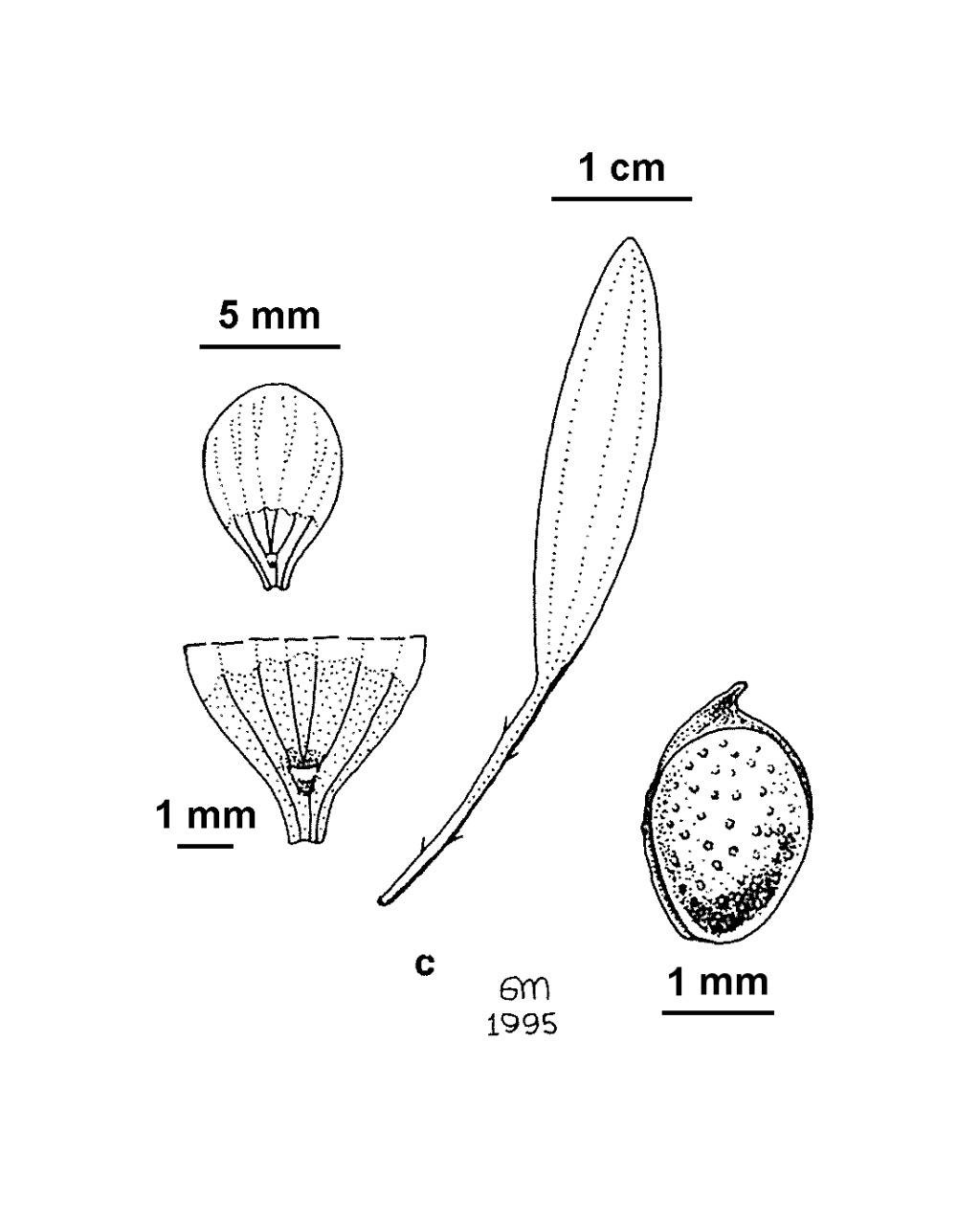Ranunculus flammula subsp. flammula
Lesser SpearwortCreeping, stoloniferous or rhizomatous perennial to c. 60 cm high. Leaves mostly cauline, sparsely appressed-hairy; petioles of lower leaves to c. 10 cm long, upper leaves mainly sessile; lamina ovate to narrowly elliptic, 1–12 cm long, 2–12 mm wide; margins entire or obscurely toothed. Flowers several in loose terminal cymes; sepals (4–)5, spreading, ovate to obovate, 2–4 mm long, appressed-hairy on back; petals 5, obovate, 4–7 mm long, 2–5 mm wide, yellow; nectary lobe cuneate, truncate, c. 0.2 mm long, fused with petal along both sides; stamens c. 20; achenes 10–40, obovate, 1.5–2 mm long, the convex faces minutely pitted, otherwise smooth; beak minute; receptacle glabrous. Flowers most of year.
HSF. Native to Europe, NW Africa and Asia. Occurs beside marshes and streams in the Yellingbo area (between Macclesfield and Woori Yallock) where locally common, but apparently not or hardly spreading since first recorded in 1928.
2 other subspecies of Ranunculus flammula are known in Europe, differing principally in having basal leaves smaller but relatively broader than subsp. flammula.
Walsh, N.G. (1996). Ranunculaceae. In: Walsh, N.G.; Entwisle, T.J., Flora of Victoria Vol. 3, Dicotyledons Winteraceae to Myrtaceae, pp. 35–63. Inkata Press, Melbourne.
 Spinning
Spinning
